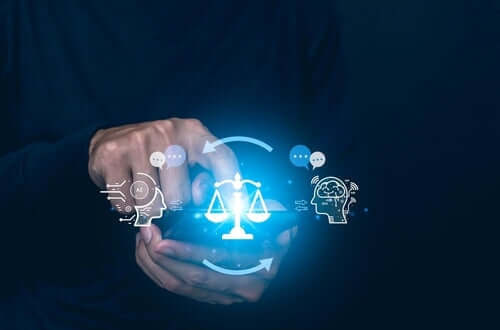
AI Responsibility: Navigating the Way
Artificial intelligence (AI) has rapidly integrated itself into our daily lives, revolutionising various industries and decision-making processes. From self-driving vehicles to medical diagnosis, AI is transforming the way we live and work. However, along with its numerous benefits, there is also a considerable level of uncertainty and misunderstanding surrounding AI, particularly regarding the issue of accountability. Determining who is responsible for the harm caused by AI systems raises significant moral and legal questions.
Complexities of AI Liability
Assigning liability for AI-generated products is a complex task that often defies traditional approaches. Determining responsibility becomes challenging due to the intricate nature of AI systems. Depending on the circumstances, the blame can be attributed to the manufacturer, seller, programmer, designer, or user. Evaluating these responsibilities accurately poses difficulties.
Emerging Approaches
As the legal industry and landscape evolve, various approaches are being considered to address AI liability. These approaches include:
- Manufacturers or Sellers: In many cases, manufacturers or sellers may be held accountable for the physical products they produce. This perspective can be extended to include AI products, where defects or malfunctions could make the manufacturer or seller liable.
- Programmers or Designers: Since AI systems are programmed, the responsibility for damages can be attributed to the individuals who design and program them. Holding programmers or designers accountable aligns with the traditional aspects of liability.
- Users: Users can be deemed responsible for negligence or reckless use of AI systems. If the harm caused by AI can be attributed to user behaviour, they may be held liable for their actions.
- Hybrid Approach: Some argue that both manufacturers and programmers should share the responsibility since both contribute to the creation of AI systems.
Steps Toward a Just Resolution:
Several steps can be taken to navigate the complexities of AI liability and ensure justice for victims:
- Develop Ethical Guidelines: Establish comprehensive ethical guidelines for developing and using AI systems. These guidelines should be based on principles such as fairness, transparency, accountability, and human rights. They should be formulated with input from experts in AI, law, ethics, and human rights.
- Create a Regulatory Framework: Implement a regulatory framework that sets standards for the development, testing, and use of AI systems. This framework should emphasise fairness, transparency, accountability, and the protection of human rights.
- Invest in Research and Development: Allocate resources to research and development focused on AI safety and ethics. This investment will enhance our understanding of AI risks, facilitate the development of mitigation strategies, and foster the creation of technologies that improve AI system safety and ethics.
- Public Education: Educate the public about AI, its potential benefits, and risks. This will empower individuals to make informed decisions regarding AI use and foster trust between the public, AI developers, and users.
- International Cooperation: Foster international collaboration to ensure responsible and ethical development and use of AI. By sharing knowledge and expertise and establishing common standards, countries can work together to address AI-related challenges effectively.
Use Cases
One notable case involves a self-driving Uber vehicle that tragically struck and killed a pedestrian in Arizona. The responsible party in this situation remains unclear. If the car had a defect, the manufacturer could be held accountable. If the program contained flaws, the developer might also face liability. Additionally, if the owner of the vehicle used it carelessly, they could be deemed responsible. Consequently, the pedestrian's family filed a lawsuit against Uber.
Another instance involves an AI-driven recruiting system that exhibited bias against women, resulting in fewer female hires. In this scenario, the company employing the algorithm could be held accountable for discrimination. Furthermore, if the algorithm's creators were aware of the bias but failed to rectify it, they too may be subject to accountability.
These examples highlight recent occurrences, but as AI continues to advance, similar cases are likely to arise.
The Path Forward
The question of accountability for AI-related damages remains a subject of ongoing debate among legal experts. Assessing culpability necessitates a comprehensive understanding of both the technology and the legal framework. Adapting legislation to reflect the rapidly evolving nature of AI is crucial to ensure that victims of AI-related harm receive adequate compensation. Although the discussion on AI culpability is likely to persist, it is imperative to address these challenges promptly as AI systems continue to advance and become more prevalent. By conscientiously examining the ethical and legal implications of AI liability, we can contribute to the safe and responsible utilisation of AI.
Striking a balance between innovation and accountability is essential as we foster a holistic approach that considers the responsibilities of developers, manufacturers, operators, and consumers, along with appropriate regulation. This will foster public confidence in AI technology, enabling us to harness its potential benefits while minimising risks and establishing an equitable and responsible AI ecosystem.






